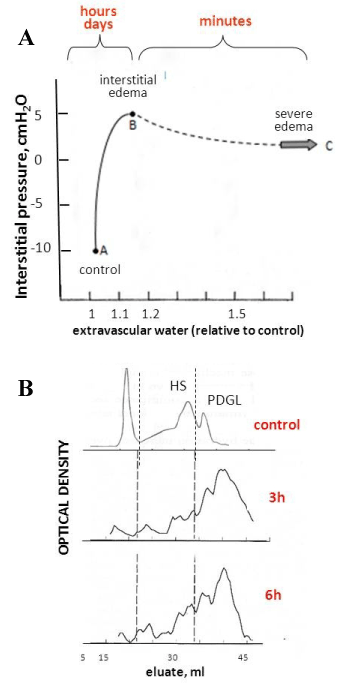
 |
| Figure 3: The mechanisms of acute development of severe edema. A: the lung strongly resists to severe edema as long as interstitial pressure opposes microvascular filtration (interstitial edema). Severe edema develops in minutes when interstitial pressure drops to zero. B: the decrease in interstitial pressure reflects the disassembly of the proteoglycan component of the extracellular matrix as shown by separating the families of proteoglycans by gel filtration chromatography. The peaks corresponding to the highest Molecular Weight (MW)(chondoritinsulphate, CS, MW> 0.5 KDa) and intermediate MWof the basement membrane (heparansulphate, HS, 0.5KDa>MW>0.1KDa) are progressively disappearing with time. The corresponding increase of the peak of small MW proteoglycans reflects the accumulation of fragments from higher MW proteoglycans. |